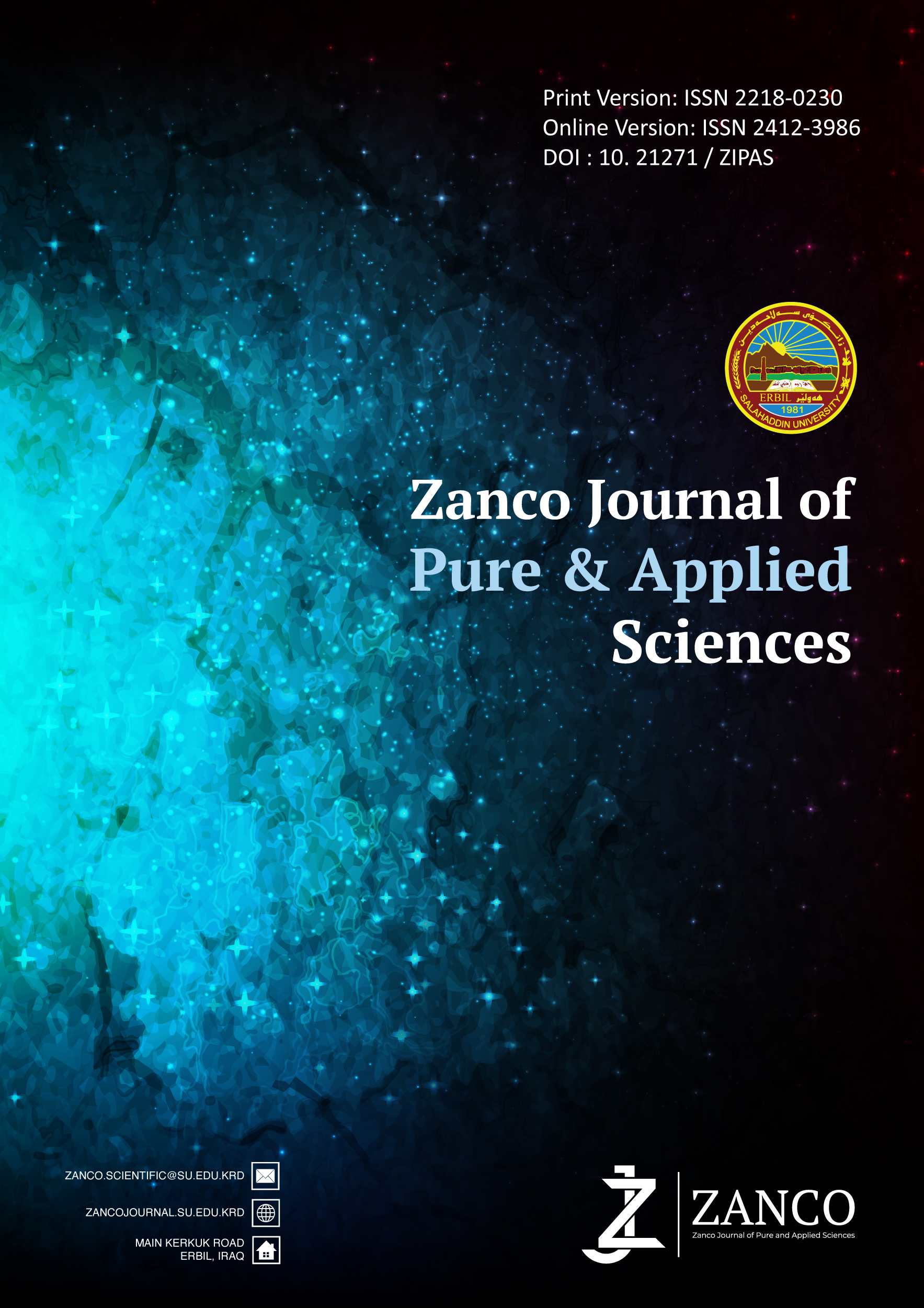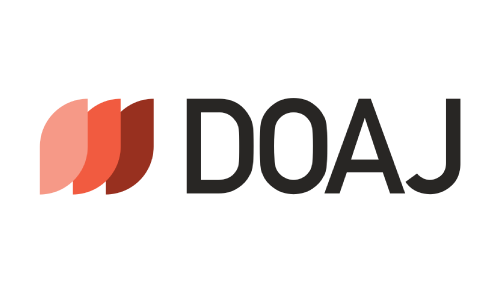Optimized Resource Allocation in Vehicular Fog Computing Environments Using Hybrid MOSP Algorithm
DOI:
https://doi.org/10.21271/ZJPAS.36.6.13Keywords:
Vehicular Fog computing, Resource Allocation, MOGWO, Subspace Minimization, PSO.Abstract
Due to the appearance of new concepts such as fog computing and rapid progress toward the Internet of Vehicles (IOV), cloud computing becomes faced with the problem of resource allocation. Fog computing offers a solution by providing and offering computing storage and networking facilities near to the end-users and the connected devices. This work mainly focuses on the resource management for parked vehicles in via vehicular fog computing so as to improve resource utilization, QoS, delay, and energy consumption. The algorithm that is called MOSP and implemented the Multi-objective Grey Wolf Optimizer (MOGWO) solves the problem of allocating the resources for the parked and slow-moving vehicles taking into consideration the limitations concerning computation, storage, and mobility of the fog nodes. For the purpose of comparison, the performance of the proposed MOSP algorithm is compared with other approaches available in the literature. The evaluation of the performance has revealed the successful achievement of less energy consumption and considerable elimination of delays, which are critical issues in vehicular fog computing environments. This paper offers an original approach to resource management in V2V fog computing for parked cars through the employment of MOSP algorithm that enhances resource efficiency while enhancing QoS, delay, and energy consumption.
References
Alomari, A., Subramaniam, S. K., Samian, N., Latip, R., & Zukarnain, Z. (2021). Resource Management in SDN-Based Cloud and SDN-Based Fog Computing: Taxonomy Study. Symmetry, 13(5), 734. https://doi.org/10.3390/sym13050734
Biswas, K., Vasant, P. M., Gamez Vintaned, J. A., & Watada, J. (2021). Cellular automata-based multi-objective hybrid grey wolf optimization and particle swarm optimization algorithm for wellbore trajectory optimization. Journal of Natural Gas Science and Engineering, 85, 103695. https://doi.org/10.1016/j.jngse.2020.103695
Chengzhou Tang, Lu Yuan, & Ping Tan. (2020). LSM: Learning Subspace Minimization for Low-Level Vision. In Proceedings of the IEEE/CVF Conference on Computer Vision and Pattern Recognition, 6235–6246.
Deb, K. (2001). Nonlinear goal programming using multi-objective genetic algorithms. Journal of the Operational Research Society, 52(3), 291–302. https://doi.org/10.1057/palgrave.jors.2601089
Habibi, P., Farhoudi, M., Kazemian, S., Khorsandi, S., & Leon-Garcia, A. (2020). Fog Computing: A Comprehensive Architectural Survey. IEEE Access, 8, 69105–69133. https://doi.org/10.1109/ACCESS.2020.2983253
Hayder, W. A., & Husain, M. H. (2018). Intelligent Application Implementation Model for Automated Agent Negotiation. Kurdistan Journal of Applied Research, 3(1), 68–74. https://doi.org/10.24017/science.2018.1.14
Hoijtink, H., Mulder, J., van Lissa, C., & Gu, X. (2019). A tutorial on testing hypotheses using the Bayes factor. Psychological Methods, 24(5), 539–556. https://doi.org/10.1037/met0000201
Husain, M. H., Ahmadi, M., & Mardukhi, F. (2024). Vehicular Fog Computing: A Survey of Architectures, Resource Management, Challenges and Emerging Trends. Wireless Personal Communications, 136(4), 2243–2273. https://doi.org/10.1007/s11277-024-11373-z
Keshari, N., Gupta, T. S., & Singh, D. (2021). Particle Swarm Optimization based Task Offloading in Vehicular Edge Computing. 2021 IEEE 18th India Council International Conference (INDICON), 1–8. https://doi.org/10.1109/INDICON52576.2021.9691758
Keshari, N., Singh, D., & Maurya, A. K. (2022). A survey on Vehicular Fog Computing: Current state-of-the-art and future directions. Vehicular Communications, 38, 100512. https://doi.org/10.1016/j.vehcom.2022.100512
Lee, S.-S., & Lee, S. (2020). Resource Allocation for Vehicular Fog Computing Using Reinforcement Learning Combined With Heuristic Information. IEEE Internet of Things Journal, 7(10), 10450–10464. https://doi.org/10.1109/JIOT.2020.2996213
Liu, C., Wang, J., Zhou, L., & Rezaeipanah, A. (2022). Solving the Multi-Objective Problem of IoT Service Placement in Fog Computing Using Cuckoo Search Algorithm. Neural Processing Letters, 54(3), 1823–1854. https://doi.org/10.1007/s11063-021-10708-2
Mekki, T., Jmal, R., Chaari, L., Jabri, I., & Rachedi, A. (2020). Vehicular Fog Resource Allocation Scheme: A Multi-Objective Optimization based Approach. 2020 IEEE 17th Annual Consumer Communications & Networking Conference (CCNC), 1–6. https://doi.org/10.1109/CCNC46108.2020.9045361
Mirjalili, S., Mirjalili, S. M., & Lewis, A. (2014). Grey Wolf Optimizer. Advances in Engineering Software, 69, 46–61. https://doi.org/10.1016/j.advengsoft.2013.12.007
Mor Harchol-Balter. (2013). Performance modeling and design of computer systems: queueing theory in action. Cambridge University Press.
Nazari Jahantigh, M., Masoud Rahmani, A., Jafari Navimirour, N., & Rezaee, A. (2020). Integration of Internet of Things and cloud computing: a systematic survey. IET Communications, 14(2), 165–176. https://doi.org/10.1049/iet-com.2019.0537
Negi, G., Kumar, A., Pant, S., & Ram, M. (2021). GWO: a review and applications. International Journal of System Assurance Engineering and Management, 12(1), 1–8. https://doi.org/10.1007/s13198-020-00995-8
Noorani, N., & Seno, S. A. H. (2020). SDN- and fog computing-based switchable routing using path stability estimation for vehicular ad hoc networks. Peer-to-Peer Networking and Applications, 13(3), 948–964. https://doi.org/10.1007/s12083-019-00859-4
Noor-A-Rahim, Md., Liu, Z., Lee, H., Ali, G. G. Md. N., Pesch, D., & Xiao, P. (2022). A Survey on Resource Allocation in Vehicular Networks. IEEE Transactions on Intelligent Transportation Systems, 23(2), 701–721. https://doi.org/10.1109/TITS.2020.3019322
Qiao, L., Liu, K., Xue, Y., Tang, W., & Salehnia, T. (2024). A multi-level thresholding image segmentation method using hybrid Arithmetic Optimization and Harris Hawks Optimizer algorithms. Expert Systems with Applications, 241, 122316. https://doi.org/10.1016/j.eswa.2023.122316
Saad Talib Hasson, & Mohammed Hassan Husain. (2012). New Developed Traffic Generator for NS-2. ORIENTAL JOURNAL OF COMPUTER SCIENCE & TECHNOLOGY, 5(2), 241–250.
Saif, F. A., Latip, R., Hanapi, Z. M., & Shafinah, K. (2023). Multi-Objective Grey Wolf Optimizer Algorithm for Task Scheduling in Cloud-Fog Computing. IEEE Access, 11, 20635–20646. https://doi.org/10.1109/ACCESS.2023.3241240
Salehnia, T., & Fathi, A. (2021). Fault tolerance in LWT-SVD based image watermarking systems using three module redundancy technique. Expert Systems with Applications, 179, 115058. https://doi.org/10.1016/j.eswa.2021.115058
Salehnia, T., MiarNaeimi, F., Izadi, S., Ahmadi, M., Montazerolghaem, A., Mirjalili, S., & Abualigah, L. (2024). A MTIS method using a combined of whale and moth-flame optimization algorithms. In Handbook of Whale Optimization Algorithm (pp. 625–651). Elsevier. https://doi.org/10.1016/B978-0-32-395365-8.00051-8
Salehnia, T., Seyfollahi, A., Raziani, S., Noori, A., Ghaffari, A., Alsoud, A. R., & Abualigah, L. (2023). An optimal task scheduling method in IoT-Fog-Cloud network using multi-objective moth-flame algorithm. Multimedia Tools and Applications, 83(12), 34351–34372. https://doi.org/10.1007/s11042-023-16971-w
Sharma, I., Kumar, V., & Sharma, S. (2022). A Comprehensive Survey on Grey Wolf Optimization. Recent Advances in Computer Science and Communications, 15(3). https://doi.org/10.2174/2666255813999201007165454
Subbaraj, S., Thiyagarajan, R., & Rengaraj, M. (2023). A smart fog computing based real-time secure resource allocation and scheduling strategy using multi-objective crow search algorithm. Journal of Ambient Intelligence and Humanized Computing, 14(2), 1003–1015. https://doi.org/10.1007/s12652-021-03354-y
Surco, D. F., Macowski, D. H., Cardoso, F. A. R., Vecchi, T. P. B., & Ravagnani, M. A. S. S. (2021). Multi-objective optimization of water distribution networks using particle swarm optimization. Desalination and Water Treatment, 218, 18–31. https://doi.org/10.5004/dwt.2021.26944
Tang, C., Wei, X., Zhu, C., Wang, Y., & Jia, W. (2020). Mobile Vehicles as Fog Nodes for Latency Optimization in Smart Cities. IEEE Transactions on Vehicular Technology, 69(9), 9364–9375. https://doi.org/10.1109/TVT.2020.2970763
Taybeh Salehnia, Saadat Izadi, & Mahmood Ahmadi. (2021). Multilevel image thresholding using GOA, WOA and MFO for image segmentation. Proceedings of the 8th International Conference on New Strategies in Engineering, Information Science and Technology in the Next Century.
Verma, S., Pant, M., & Snasel, V. (2021). A Comprehensive Review on NSGA-II for Multi-Objective Combinatorial Optimization Problems. IEEE Access, 9, 57757–57791. https://doi.org/10.1109/ACCESS.2021.3070634
Yuan, Y., Mu, X., Shao, X., Ren, J., Zhao, Y., & Wang, Z. (2022). Optimization of an auto drum fashioned brake using the elite opposition-based learning and chaotic k-best gravitational search strategy based grey wolf optimizer algorithm. Applied Soft Computing, 123, 108947. https://doi.org/10.1016/j.asoc.2022.108947
Downloads
Published
How to Cite
Issue
Section
License
Copyright (c) 2024 Nahro Kamal Saeed, Khalid A. Asaad, Arkan A. Saffer

This work is licensed under a Creative Commons Attribution 4.0 International License.














